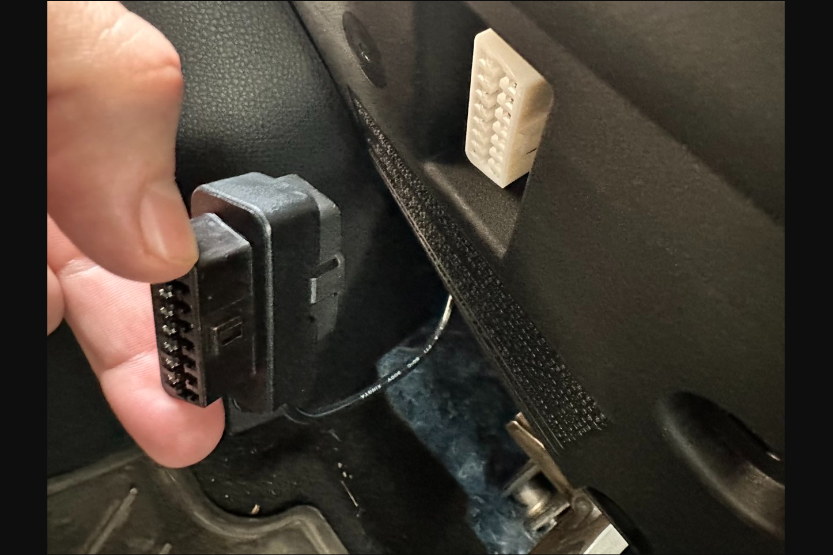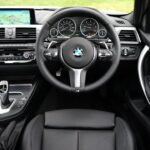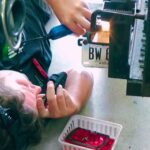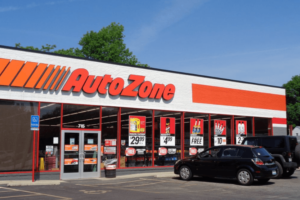The On-Board Diagnostic (OBD-II) port is a vital component of modern vehicles. It is used to diagnose problems with the car’s engine and transmission systems.
However, there are times when the OBD-II port may not work, leaving car owners unable to access important diagnostic information. This can be frustrating, especially when trying to troubleshoot a problem with the vehicle.
There are several reasons why the OBD-II port may not be working. It could be due to a blown fuse, low battery voltage, a damaged wiring harness, or defective control units. In some cases, the port pins may also be damaged.
When the OBD-II port is not working, it can be difficult to determine the root cause of the problem. However, there are steps that car owners can take to troubleshoot the issue and get their OBD-II port working again.
In this article, we will explore the common reasons why the OBD-II port may not be working and provide practical solutions to fix the issue. We will also provide tips on how to prevent the OBD-II port from getting damaged in the first place.
By the end of this article, car owners will have a better understanding of the OBD-II port and how to keep it in good working condition.
Understanding OBD-II Port

The OBD-II port, also known as the OBD2 port or the OBD port, is a standardized diagnostic interface found on most vehicles manufactured after 1996.
It is used to communicate with the vehicle’s onboard computer, also known as the Engine Control Unit (ECU), to retrieve diagnostic information about the vehicle’s performance and identify problems.
The OBD-II port is typically located under the dashboard on the driver’s side of the vehicle. It is a 16-pin connector that allows a diagnostic scanner to communicate with the vehicle’s ECU.
The OBD-II port provides access to a wide range of diagnostic information, including engine speed, vehicle speed, fuel system status, and emissions data.
As per Noregon (.com), on-board diagnostics, or OBD, is a system that allows vehicles to self-diagnose and report problems. OBD-II is the second generation of this system and is standardized across all vehicles sold in the United States since 1996.
The OBD-II system uses a series of diagnostic trouble codes (DTCs) to identify problems with the vehicle’s systems.
Vehicle diagnostic interfaces, such as the OBD-II port, have made it easier for mechanics and car owners to diagnose and fix problems with their vehicles. With the help of a diagnostic scanner, a mechanic can quickly identify the source of a problem and make the necessary repairs.
Car owners can also use a diagnostic scanner to retrieve diagnostic information about their vehicles and monitor their performance.
In summary, the OBD-II port is a standardized diagnostic interface found on most vehicles manufactured after 1996. It provides access to a wide range of diagnostic information and allows mechanics and car owners to diagnose and fix problems with their vehicles quickly.
Signs of OBD-II Port Not Working
The OBD-II port is a crucial component of a vehicle’s onboard diagnostic system. It is responsible for communicating with the vehicle’s computer and retrieving important data such as error codes, trouble codes, and other diagnostic information.
When the OBD-II port is not working, it can cause a number of issues that can affect the vehicle’s performance and safety. Here are some signs that indicate that the OBD-II port is not working:
Check Engine Light
One of the most obvious signs that the OBD-II port is not working is the check engine light. When the OBD-II port is not functioning properly, the check engine light may not illuminate when it should. This can be a sign of a blown fuse or a malfunctioning OBD-II port.
It is important to note that there are many other reasons why the check engine light may come on, so it is important to have the vehicle checked by a professional mechanic to determine the root cause of the issue.
Error Codes
Another sign that the OBD-II port is not working is the inability to retrieve error codes. When the OBD-II port is not functioning properly, it may not be able to communicate with the vehicle’s computer to retrieve error codes.
This can make it difficult to diagnose and repair issues with the vehicle. In some cases, the error codes may be stored in the vehicle’s memory, but they may not be accessible without a functioning OBD-II port.
Malfunctioning
When the OBD-II port is not working, it can cause a number of issues with the vehicle’s performance. For example, the vehicle may experience reduced power or acceleration, poor fuel economy, or rough idling.
These issues can be caused by a number of factors, but a malfunctioning OBD-II port can be one of them.
Trouble Codes
In addition to error codes, the OBD-II port is also responsible for retrieving trouble codes. These codes can provide valuable diagnostic information about the vehicle’s performance and can help identify issues that need to be addressed.
When the OBD-II port is not working, it may not be able to retrieve these trouble codes, making it difficult to diagnose and repair issues with the vehicle.
In summary, the OBD-II port is a critical component of a vehicle’s onboard diagnostic system. When it is not working properly, it can cause a number of issues that can affect the vehicle’s performance and safety.
If you are experiencing any of the signs listed above, it is important to have your vehicle checked by a professional mechanic to determine the root cause of the issue.
Common Causes of OBD-II Port Failure

The OBD-II port is a crucial component of a vehicle’s diagnostic system, allowing mechanics and car owners to access important information about the car’s performance.
However, there are several reasons why the OBD-II port may fail to work. Here are some of the most common causes of OBD-II port failure:
Blown Fuse
One of the most common reasons why the OBD-II port may fail to work is a blown fuse. If the fuse that controls the OBD-II port is blown, then the port will not receive power, and it will not be able to communicate with the car’s computer.
In some cases, the car may have multiple fuses that control different aspects of the OBD-II system, so it is important to check all of the fuses in the fuse box to ensure that none of them are blown.
Corrosion
Corrosion can also be a problem for the OBD-II port, as it can cause the pins in the port to become dirty or damaged.
This can prevent the port from making a proper connection with the diagnostic tool, and it can cause the tool to give inaccurate readings or fail to communicate with the car’s computer altogether.
If corrosion is suspected, it is important to clean the pins in the OBD-II port thoroughly to ensure that there is no buildup or debris that could interfere with the connection.
Damaged Wiring Harness
A damaged wiring harness can also cause the OBD-II port to fail. If the wires in the harness become frayed or broken, then the connection between the port and the car’s computer may be disrupted, preventing the port from functioning properly.
In some cases, the damage may be visible, but in other cases, it may be hidden inside the wiring harness. If a damaged wiring harness is suspected, it is important to have it inspected by a professional mechanic.
Low Battery Voltage
Low battery voltage can also cause the OBD-II port to fail. If the car’s battery is not providing enough power to the system, then the port may not receive the power it needs to communicate with the diagnostic tool.
In some cases, this may be due to a problem with the battery itself, but it could also be caused by a faulty alternator or other electrical issue.
Overall, there are several reasons why the OBD-II port may fail to work, including blown fuses, corrosion, damaged wiring harnesses, and low battery voltage.
By understanding these common causes of OBD-II port failure, car owners and mechanics can diagnose and repair problems with the diagnostic system more effectively.
Troubleshooting OBD-II Port Issues

When the OBD-II port on a vehicle is not working, there are several potential causes. Fortunately, as per Arts Automotive (.com), with a few troubleshooting steps, it is possible to identify and resolve the issue.
One of the most common reasons for an OBD-II port not working is a blown fuse. To check if this is the case, the user should locate the fuse box in their vehicle and check the OBD-II fuse. If the fuse is blown, it will need to be replaced.
Another potential issue is low battery voltage. If the battery voltage is too low, the OBD-II port may not receive enough power to function properly.
To check if this is the case, the user should use a multimeter or voltmeter to measure the battery voltage. If the voltage is low, the battery may need to be charged or replaced.
If the fuse and battery voltage are both fine, the next step is to check the wiring harness. A damaged wiring harness can cause a loss of connection between the OBD-II port and the vehicle’s computer. The user should use a multimeter or continuity tester to check the wiring for any breaks or damage.
If the wiring harness is fine, the user may need to diagnose the issue using a diagnostic tool such as a scanner, scan tool, or code reader. These tools can help identify any issues with the OBD protocol, transmission, communication, or data link.
In some cases, the issue may be with the engine or the vehicle’s computer (also known as the control unit or ECU). If this is the case, the user may need to take their vehicle to a mechanic for further diagnosis and repair.
Overall, troubleshooting an OBD-II port issue can be a straightforward process. By checking the fuse, battery voltage, wiring harness, and using diagnostic tools, the user can identify and resolve the issue quickly and efficiently.
Professional Assistance for OBD-II Issues
When encountering OBD-II issues, seeking professional assistance may be necessary. A mechanic or technician with experience in diagnosing and repairing OBD-II systems can help identify and resolve the issue.
A mechanic can use a diagnostic scanner to read the trouble codes and determine the root cause of the problem. They can also check the OBD-II port for any physical damage or wiring issues. If the problem is a blown fuse, they can easily replace it.
In some cases, a technician may need to perform more complex repairs, such as replacing the Engine Control Unit (ECU) or repairing a damaged wiring harness. These repairs require specialized knowledge and expertise, and should only be performed by a qualified professional.
It is important to note that while a mechanic or technician can provide valuable assistance, they may also charge a fee for their services. The cost of the repair will depend on the severity of the issue and the amount of time and labor required to fix it.
Overall, seeking professional assistance for OBD-II issues can help ensure that the problem is properly diagnosed and resolved. A mechanic or technician with experience in OBD-II systems can provide valuable expertise and help get your vehicle back on the road.
Preventing OBD-II Port Problems

The OBD-II port is an essential component of a vehicle’s diagnostic system. However, it is susceptible to various problems that can cause it to stop working. Here are some tips to help prevent OBD-II port problems:
Regular Maintenance
Regular vehicle maintenance can help prevent OBD-II port problems. Keeping the car’s battery in good condition and replacing blown fuses can help ensure that the port receives the necessary power supply.
Additionally, ensuring that the wiring harness is in good condition can help prevent damage to the port.
Check the Relay
A faulty relay can cause problems with the OBD-II port. Checking the relay and replacing it if necessary can help ensure that the port receives the necessary power supply.
Check the Pins
The OBD-II port has 16 pins, and each pin is responsible for a specific function. Pin 16 is the power supply pin, while pins 4 and 5 are the ground pins. Checking the pins and ensuring that they are in good condition can help prevent problems with the port.
Disconnect the Negative Battery Cable
Disconnecting the negative battery cable before working on the OBD-II port can help prevent accidental electrical shorts. This can help prevent damage to the port and ensure that it continues to function properly.
Avoid Using the Cigarette Lighter or Accessory Port
The cigarette lighter and accessory port are not designed to power the OBD-II port. Using these ports to power the port can cause problems with the port and other electrical components.
Ensure the Ignition is On
The OBD-II port requires the ignition to be on to function properly. Ensuring that the ignition is on can help prevent problems with the port.
Be Aware of Proprietary Protocols
Some vehicles may use proprietary protocols that are not compatible with standard OBD-II scanners. In such cases, specialized tools such as MOBD, MUTT, or ALDL may be required to diagnose the vehicle.
Keep Up with Emissions Regulations
OBD-II ports are essential for emissions testing and compliance. Keeping up with emissions regulations can help prevent problems with the port and ensure that the vehicle meets the necessary standards.
Beware of Radio Interference
Radio interference can cause problems with the OBD-II port. Keeping the port away from radio antennas and other sources of interference can help prevent problems with the port.
As a mechanic, I suggest that vehicle owners follow these tips to prevent OBD-II port problems and ensure that their vehicles continue to function properly.
In Summary
In summary, there are several reasons why the OBD-II port may not be working. These can include blown fuses, low battery voltage, damaged wiring harnesses, a defective control unit, or damaged OBD-II port pins.
If the OBD-II port is damaged, it may be difficult to connect a diagnostic tool, and error codes may not be readable. Extreme temperatures, direct sunlight, or physical impacts can cause damage to the port.
To fix the issue, it is recommended to first turn on the ignition and check for blown fuses. If the fuses are fine, then check the battery voltage. If the voltage is low, charge or replace the battery. If these steps do not solve the problem, then inspect the wiring harness and the control unit.
If the OBD-II port pins are damaged, then it may be necessary to replace the port. This can be done by unscrewing the panel that covers the OBD-II port, unplugging the port from its wiring harness, and inserting a new port into its housing.
It is important to note that if a diagnostic scanner is not available, it may be necessary to visit a mechanic to diagnose and fix the issue. By following these steps, drivers can ensure that their OBD-II port is working properly and that they can easily diagnose any issues with their vehicle.



![Ford Sync Phone Button Not Working [Causes and How to Fix] Ford Sync Phone Button Not Working](https://roadsumo.com/wp-content/uploads/2022/03/Ford-Sync-phone-button-not-working-150x150.jpg)

![Loaner Car [What Is It? Tips for Buying a Loaner Car] loaner car](https://roadsumo.com/wp-content/uploads/2021/06/loaner-car-150x150.jpg)

![Read more about the article Service StabiliTrak [What Is This Message and How to Fix It?]](https://roadsumo.com/wp-content/uploads/2021/03/Service-StabiliTrak-300x200.jpg)

![Read more about the article AutoZone Services and Prices [Full List]](https://roadsumo.com/wp-content/uploads/2022/10/Autozone-services-and-prices-300x200.jpg)